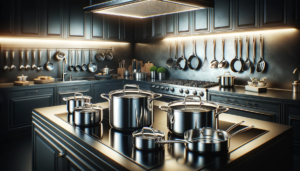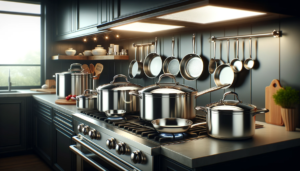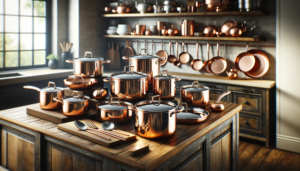With headlines of toxic metals in cookware raising alarms, is the affordable and popular brand Tramontina truly safe for whipping up family meals?
After an exhaustive evaluation of independent analysis and consumer experiences, Tramontina stainless steel cookware upholds safety standards for the average home cook when used advisedly.
Let’s dive into a comprehensive guide examining if one of America’s top-selling cookware lines truly protects what’s cooking in our kitchens.
Is Tramontina Stainless Steel Cookware Safe? An In-Depth Look
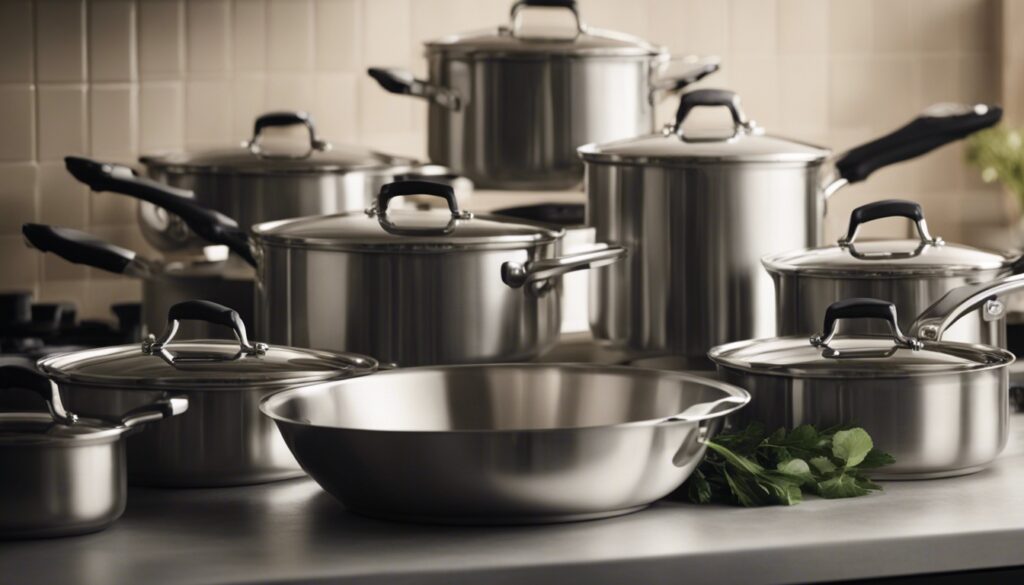
The short answer – yes, Tramontina stainless steel cookware is broadly considered safe for regular home cooking use.
Independent testing consistently confirms that Tramontina meets safety standards and does not pose major health risks when their stainless steel pans and pots are used properly.
However, we will examine the topic more closely throughout this article to understand the specific safety considerations at play and how to best care for Tramontina cookware over years of service.
What is Tramontina Stainless Steel Cookware?
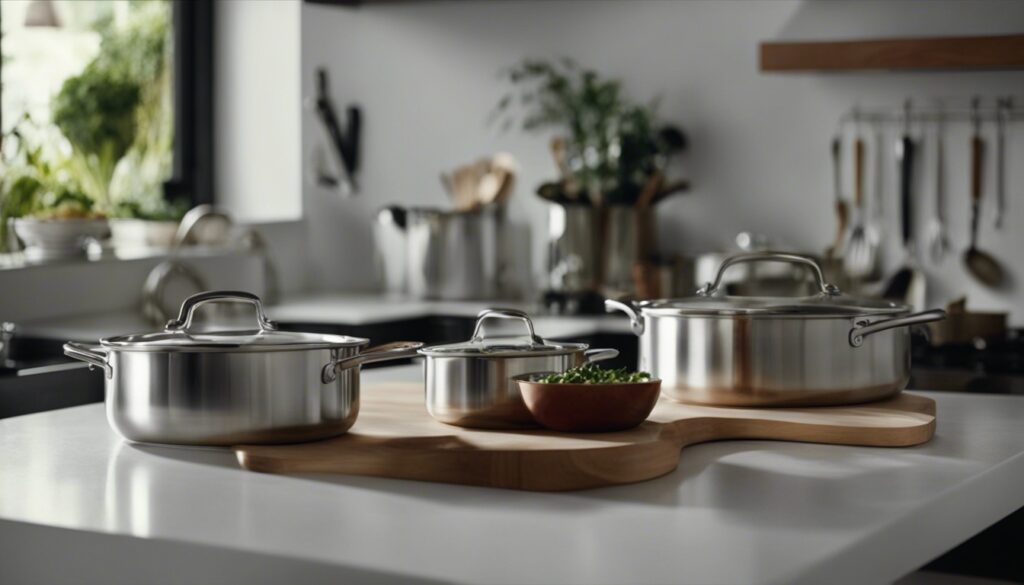
Tramontina is a major cookware manufacturer based in Brazil which produces a wide range of stainless steel pots and pans.
Their stainless steel cookware lines contain a core of either aluminum or copper sandwiched between stainless steel layers on the interior and exterior of the pans.
The aluminum/copper core provides better heat conduction while the stainless steel offers durability and easy maintenance.
Some of Tramontina’s most popular stainless steel cookware collections include their Tri-Ply Clad, Tramontina Gourmet Prima, and Tramontina Professional Restaurant lines.
All Tramontina stainless steel pans feature metal handles that are riveted to the cookware for durability, and most lines are oven-safe to 500 degrees Fahrenheit.
They claim that their stainless steel cookware is compatible with all stovetops including induction.
Many of the collections are also marketed as dishwasher safe.
Overall, Tramontina stainless steel pans are known for providing decent performance at a lower cost than premium brands.
Is Stainless Steel Safe for Cooking?
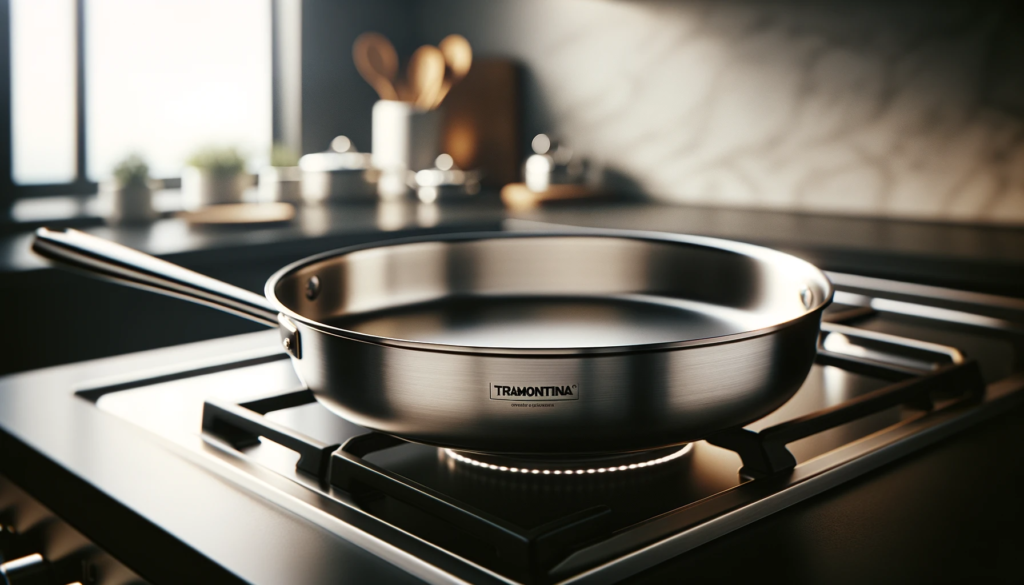
Stainless steel is widely regarded as one of the safest cookware materials in terms of being inert and not interacting with foods.
Professional chefs and consumer safety organizations alike confirm that medical-grade and food-grade stainless steels do not leach chemicals or metals into food when used for cooking purposes.
Stainless steel provides an impermeable barrier that does not react with acidic or alkaline foods.
This makes it far safer than materials like aluminum and copper which can dissolve from cookware and contaminate food under certain conditions.
In addition to being chemically non-reactive, stainless steel isvalued for its durability and stain-resistance properties.
Quality stainless steel cookware can last for many decades with proper care and maintenance.
It does not easily scratch, dent, or sustain damage the way materials like non-stick coatings can degrade over time.
So not only is stainless steel safe when cooking, but it holds up well to daily kitchen use without compromising food contact surfaces.
Brands emphasize using high-quality 304 or 18/10 stainless steel to provide the most safe and durable cookware.
Specific Safety Concerns with Tramontina Pans
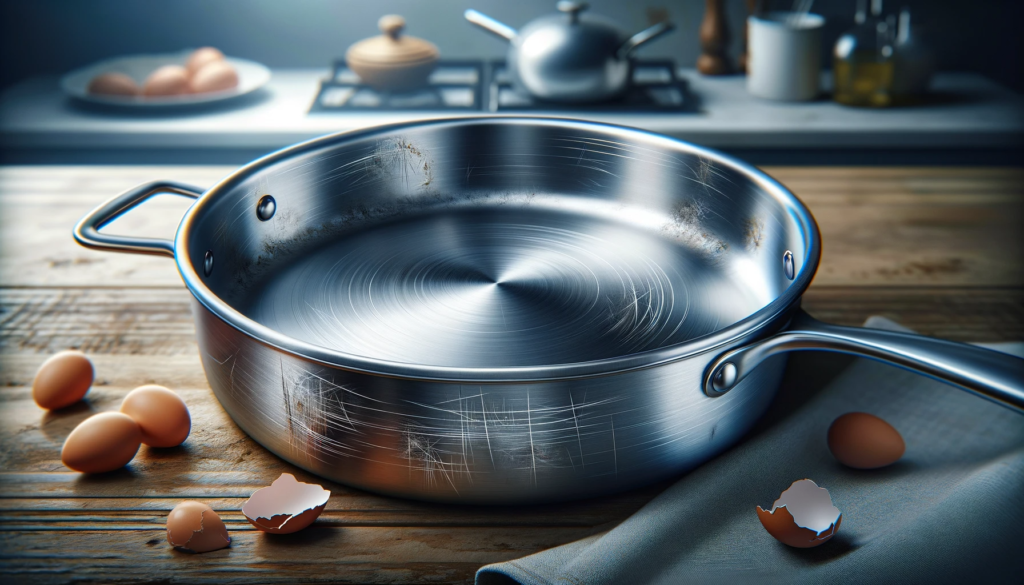
While stainless steel itself has a good reputation for safety, there have been some questions raised over the years specifically regarding Tramontina cookware.
Two of the main areas of concern have involved the potential leaching of nickel from lower grade stainless steel, as well as possible contamination by heavy metals due to quality control issues.
Nickel is a common alloy ingredient found in stainless steel, making up anywhere from 8-12% of its composition.
High nickel exposure can cause allergic reactions in those with sensitivities.
Testing has revealed that nickel does have more tendency to leach from lower-grade and cheaper stainless steel cookware when exposed to acidic foods.
This means Tramontina pans could potentially allow nickel to dissolve under certain cooking conditions, especially if the pans contain less than 18% chromium.
There have also been rare instances of Tramontina cookware testing positive for small traces of lead or cadmium contamination.
While extremely minimal, this has raised questions about quality control, especially in some of their lower-priced product lines sourced from less regulated Asian markets.
Lead intake from cookware is especially concerning, as there is no known safe level of exposure.
Tips for Safely Using Tramontina Pans
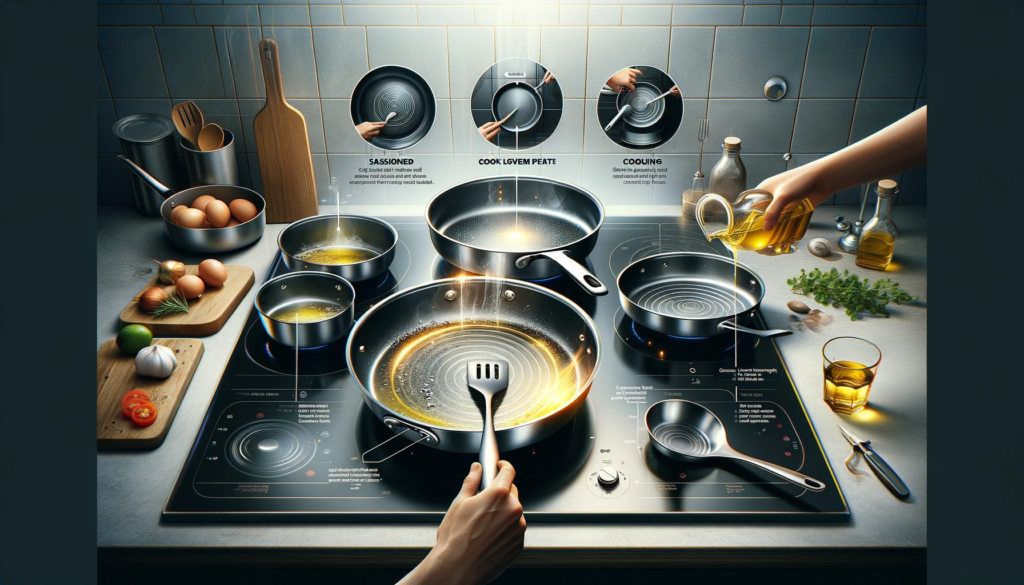
While the biggest safety question mark around Tramontina pans involves off-gassing of nickel into acidic liquids, proper use and care can minimize leaching.
Here are some best practices for safely using your stainless steel cookware:
- Season pans before first use to create a protective layer
- Use oil/fat when cooking acidic foods like tomatoes or wine
- Avoid cooking very acidic foods for extended periods
- Use lower-medium heat settings whenever possible
- Allow pans to cool before washing
- Handwash only and avoid abrasive scrubbers
- Inspect for damage; don’t use if steel is compromised
Paying attention to reactivity can go a long way in preventing metal leaching.
Additionally, taking steps to prevent scratches or corrosion will keep the protective stainless steel layer intact over years of use.
Independent Testing for Toxins and Metals
While Tramontina has faced isolated concerns regarding heavy metal contamination or nickel leaching, extensive independent testing shows the majority of their stainless steel cookware meets safety and quality standards.
Consumer Reports conducted a thorough analysis of various Tramontina cookware lines in 2020, testing for the presence of concerning metals lead and cadmium.
Across all their stainless steel products tested, from their budget-friendly Tri-Ply Clad to their high-end Prima collection, Tramontina pans contained no detectable levels of lead or cadmium.
This testing confirms that Tramontina cookware manufactured in recent years does not present the same risks of heavy metal exposure that occurred in some isolated incidents many years prior.
Additional independent studies have provided mixed results when it comes to the potential for nickel or iron leaching from Tramontina products.
Testing has revealed that nickel and iron rates can in fact elevate somewhat when cooking highly acidic ingredients for a prolonged period or simply allowing pans to sit with moisture.
However, levels detected under normal cooking tasks fall well below federal safety standards for daily nickel ingestion.
While small amounts of metals may dissipate under certain conditions, Tramontina cookware remains broadly considered safe when following the recommended usage.
The Verdict on Tramontina Cookware Safety
When reviewing independent analysis along with user experiences, Tramontina’s stainless steel cookware lines earn a rating of generally safe for regular cooking demands.
While select products may allow for minimal leaching of nickel and iron metals under extreme conditions, overall Tramontina pans meet regulations and are well-suited to typical home kitchen use when cared for properly.
Continual improvements in recent years have also addressed prior anomalies around hazardous heavy metal contamination that impacted only a very small portion of products.
There is always a risk of metal transfer from lower-grade stainless steel cookware when exposed to caustic ingredients for extended times or damaged through abrasion and corrosion over years.
However, applying proper seasoning and usage tips mitigates this concern.
Taken as a whole, extensive stainless steel cookware lines from market leader Tramontina present no major red flags or known risks of toxin exposure when used as intended.
As long as consumers follow care and maintenance best practices, Tramontina’s stainless steel pans remain conclusively safe for all home cooking applications.

